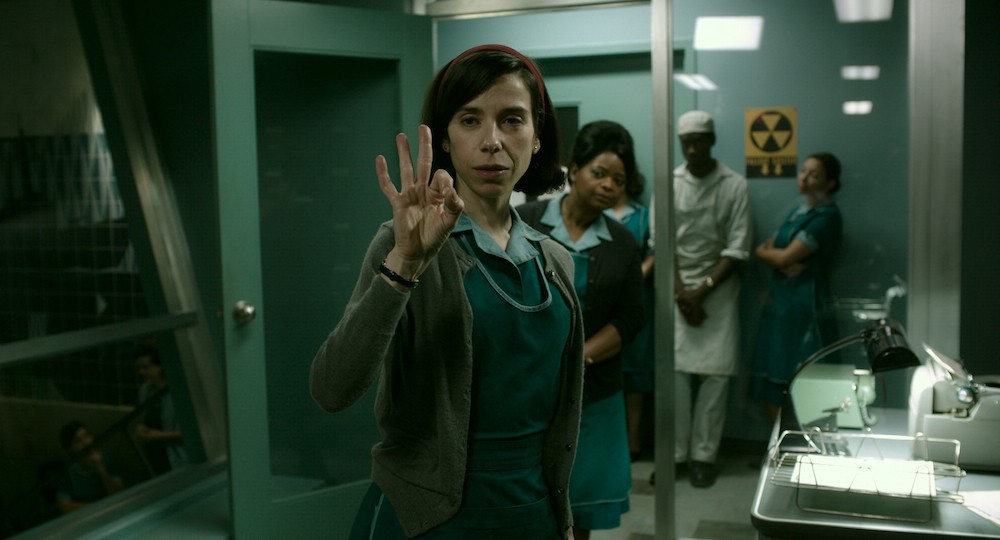The Shape of Water
The Shape of Water, 2017, 3 ¼ stars
An odd Shape
The Shape of Water is an original but ungainly creation
From The Orlando Weekly, January 3, 2018
The Shape of Water has the most intriguing title of any film this year. Though poetic, the name makes little sense, of course, as water has no shape. It finds form only when observed in a container.
That container, in this case, is writer-director Guillermo del Toro (Pan’s Labyrinth, The Devil’s Backbone), who has taken a potentially magical subject and forced it into shapes that are beautiful but also occasionally awkward. Though his new adult fairy tale deserves admiration, it never flows as freely or gracefully as it should but is instead – to carry the water metaphor further – dammed up structurally and thematically. It has moments of originality, humor and grace, but the movie also contains heavy-handed scenes that seem to exist only to satisfy del Toro’s fetishes for crude violence and sexuality. This is not your father’s fish film.
For all the sumptuous style and lush visuals, The Shape of Water is, at its heart, a simple fish-out-of-water story, both figuratively and literally. Sally Hawkins plays Elisa, a mute woman who works as a custodian in a top-secret government laboratory. Her lonely, quiet life consists of little but waking up, boiling an egg, masturbating in the buff, cleaning bathrooms and spending time with her only friends: co-worker Zelda (Octavia Spencer) and next-door neighbor Giles (Richard Jenkins). This is America in the early 1960s, so Zelda (poor and black) and Giles (an unemployed, and presumably gay, artist) also lead lives of lowered expectations. Together the three eke out an isolated existence on the edges of society.
Their unexceptional world is suddenly shattered when a strange aquatic creature arrives at the lab. Treated by most employees as an animal worthy of the electric cattle prod, the beast actually possesses the ability to reason, feel compassion, grasp basic language and even potentially heal. But Elisa, perhaps owing to her own identity as an outcast, is the only one who realizes this. And, over time, she sees something else in him: a friend worthy of her love.
The story is both simple and profound, though the screenplay (co-written with Vanessa Taylor) often strays from that simplicity and occasionally embraces silliness instead of profundity. (Creature from the Black Lagoon meets Stanley Kubrick.) The usually brilliant Michael Shannon is not at his best, though he fully embodies the evil of his character, who – in a subplot that is not entirely successful – is determined to destroy the beast instead of letting him fall into the clutches of Soviet spies. (Cold War paranoia is prevalent and allows for some of the film’s lighter moments.) Surprisingly, Michael Stuhlbarg, as a sympathetic scientist, is stronger than Shannon. But it’s Hawkins and Jenkins who power the film and make its absurd moments believable. Don’t be surprised if they receive Oscar nominations for actress and supporting actor, respectively, along with Nigel Churcher and Paul Austerberry for art direction/production design.
“The way he looks at me, he doesn’t know what I lack or how I am incomplete,” Elisa tells Giles. “He sees me for what I am, as I am. He’s happy to see me every time, every day.”
We should all be so lucky.
© 2018 Orlando Weekly / MeierMovies, LLC
